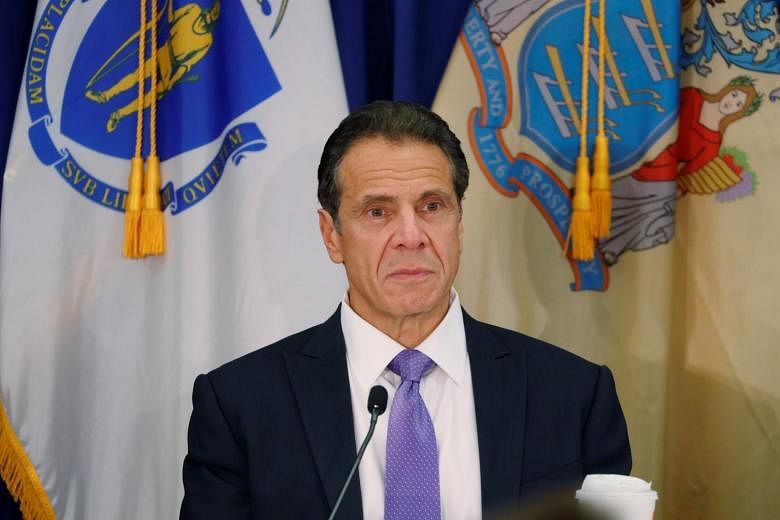NEW YORK (NYTIMES) - More than 2,500 police officers patrol New York City's subway, where crime is down sharply from the era of rampant violence and graffiti three decades ago.
Govenor Andrew Cuomo, nevertheless, wants more police.
He is seeking to expand the force by 20 per cent, hiring 500 more officers, which Mr Cuomo says is needed to combat fare evasion and to address issues like homelessness.
The plan would cost the Metropolitan Transportation Authority more than US$50 million (S$68 million) a year even as it faces a looming financial crisis and struggles to provide reliable service.
"Historically, the NYPD did the policing in the transit system, but there has been a dramatic increase in crime in the subway system," Mr Cuomo, who controls the subway, told reporters recently. "Felonies are up, assaults are up, robberies are up, and I've been talking about this for years."
While some individual categories of crime are up this year, the overall number of major felonies on the subway is actually down, according to New York Police Department statistics.
The city's outgoing police commissioner James O'Neill challenged Mr Cuomo, calling his comments a "total mischaracterisation", and arguing that the subway is safe.
"Overall, crime is down," said Mr O'Neill, who announced on Monday (Nov 5) that he was resigning.
The plan to hire new officers - primarily for the subway but also potentially for buses - has already come under fire from transit advocates for being too expensive, as the agency is considering subway and bus service cuts and major lay-offs.
Transit groups have urged Mr Cuomo to cancel the plans for new officers, who would work for the transit agency rather than the city's police department, as the current force does. The governor, they say, should instead focus resources on modernising the subway, which still relies on signal equipment that was introduced before World War II.
The proposal has become even more unpopular after two viral videos raised concerns about overly aggressive policing on the subway.
One video showed an officer punching two young men, leading to the officer being transferred to desk duty. A second video showed a swarm of officers clambering on to a train to arrest a man, frightening riders, even though the man did not appear to resist.
The police said they were responding to reports that the man had a gun, though they did not find one on him.
Hundreds of protesters flooded a subway station last Friday and jumped the turnstiles to protest against what they said was police brutality. Leaders on the left such as Representatives Alexandria Ocasio-Cortez and Cynthia Nixon have criticised the crackdown on fare evasion as targeting poor people.
"There is no excuse for the excessive use of force and hyper-aggressive policing we saw in these two incidents," Mr Jumaane Williams, the city's public advocate, said at a news conference at City Hall.
Transit officials have warned that they are facing a growing budget deficit. While officials at the authority say they are not planning to cut subway or bus service, the prospect of such cuts was enough to prompt Mr Andy Byford, the subway's leader, to threaten to resign last month.
All told, the subway is remarkably safe considering that it serves about 5.5 million people every day. There are about seven major crimes per day, compared with nearly 50 major crimes per day in 1990, when many New Yorkers were leery about riding the subway, especially outside rush hour.
Mr Cuomo's office defended his decision to hire more officers by saying that he was specifically referring to arrests when he said subway crime was up and pointed to statistics showing that the number of felony arrests on the subway was up slightly this year.
Expanding the police force will likely add to the transit agency's financial challenges.
The annual cost for one new officer is nearly US$93,000 in the first year, including overtime, health benefits and pension costs, according to a report by the Citizens Budget Commission. Hiring 500 officers and 81 supervisors will cost US$56 million in the first year and grow to nearly US$120 million per year in a decade.

